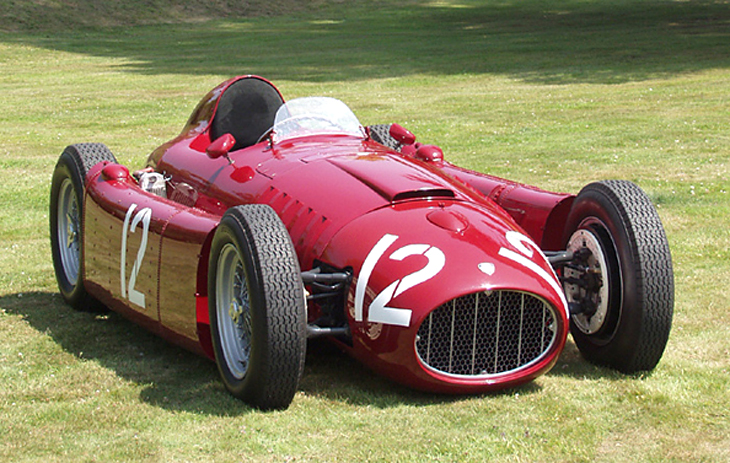1954 Lancia D50

The descriptions of the Classic Cars in the Directory were partly generated or supplemented with the help of artificial intelligence (AI). The content may occasionally not always be entirely accurate or factually correct despite careful checking.
The Lancia D50 is a classic formula one racing car that took the world by storm in the 1954 season. This powerful and sleek racing car was designed by the legendary engineer, Vittorio Jano, and was equipped with some of the most advanced technology of its time.
The frame of the Lancia D50 is constructed from aircraft-grade aluminum, making it both lightweight and incredibly durable. The body of the car is made from hand-crafted fiberglass, which is both aerodynamic and visually striking. The front of the car features a distinctive nose cone and a large air intake for improved engine cooling.
Under the hood, the Lancia D50 is powered by a 2.5-liter V8 engine that produces over 270 horsepower. This impressive power plant is mated to a five-speed manual transmission that allows for lightning-fast gear changes. The engine is also equipped with dual ignition and dual fuel pumps for added reliability and performance.
The suspension system on the Lancia D50 is equally impressive, featuring double wishbones at the front and a De Dion rear axle. This advanced suspension setup allows for precise handling and excellent stability, making the car a joy to drive even at high speeds. The car is also equipped with disc brakes on all four wheels, which provides excellent stopping power and control.
In addition to its advanced mechanical features, the Lancia D50 also boasts a number of innovative design elements. The car's fuel tank is located in the rear, which helps to improve weight distribution and handling. The cockpit is also uniquely designed, with the driver's seat positioned in the center of the car for improved visibility and balance.
Overall, the Lancia D50 is an engineering marvel that pushed the boundaries of what was possible in a formula one racing car. Its innovative design, state-of-the-art technology, and impressive performance make it a true legend of automotive history.
Milestones
- The Lancia D50 was unveiled to the public in February 1954 at the Turin Auto Salon. - The D50 made its racing debut during the May 1954 Gran Premio dell'Autodromo di Monza race. - Lancia driver Alberto Ascari won the D50's first race, followed by his teammate Luigi Villoresi taking second place. - Ascari went on to win the Monaco Grand Prix later that month, establishing the D50 as a formidable contender in Formula One. - The D50's innovative design included a Formula One first: a transverse-mounted V8 engine with a tubular spaceframe chassis. - Lancia was forced to withdraw from Formula One racing in 1955 due to financial troubles, with the D50 being sold to the Scuderia Ferrari team. - Ferrari driver Juan Manuel Fangio won the 1956 Monaco Grand Prix in a D50, securing its place in racing history. - The D50 continued to race under various teams and drivers until the end of the 1957 racing season. - Today, the Lancia D50 remains a celebrated design icon and one of the most beloved cars in Formula One history.Technical
• The Lancia D50 was a single-seater racing car designed by Vittorio Jano for Lancia in 1954 • It was powered by a 2.5-liter, V8, water-cooled engine • The engine was capable of producing up to 260 horsepower • The car had a tubular space-frame chassis with an all-independent suspension system • The D50 was equipped with drum brakes at all four corners • It had a 5-speed manual gearbox and was rear-wheel drive • The car was driven by some of the greatest drivers of the time, including Alberto Ascari and Juan Manuel Fangio • It competed in the 1954 and 1955 Formula One seasons • The D50 was known for its distinctive shape, featuring a high cockpit and streamlined bodywork.